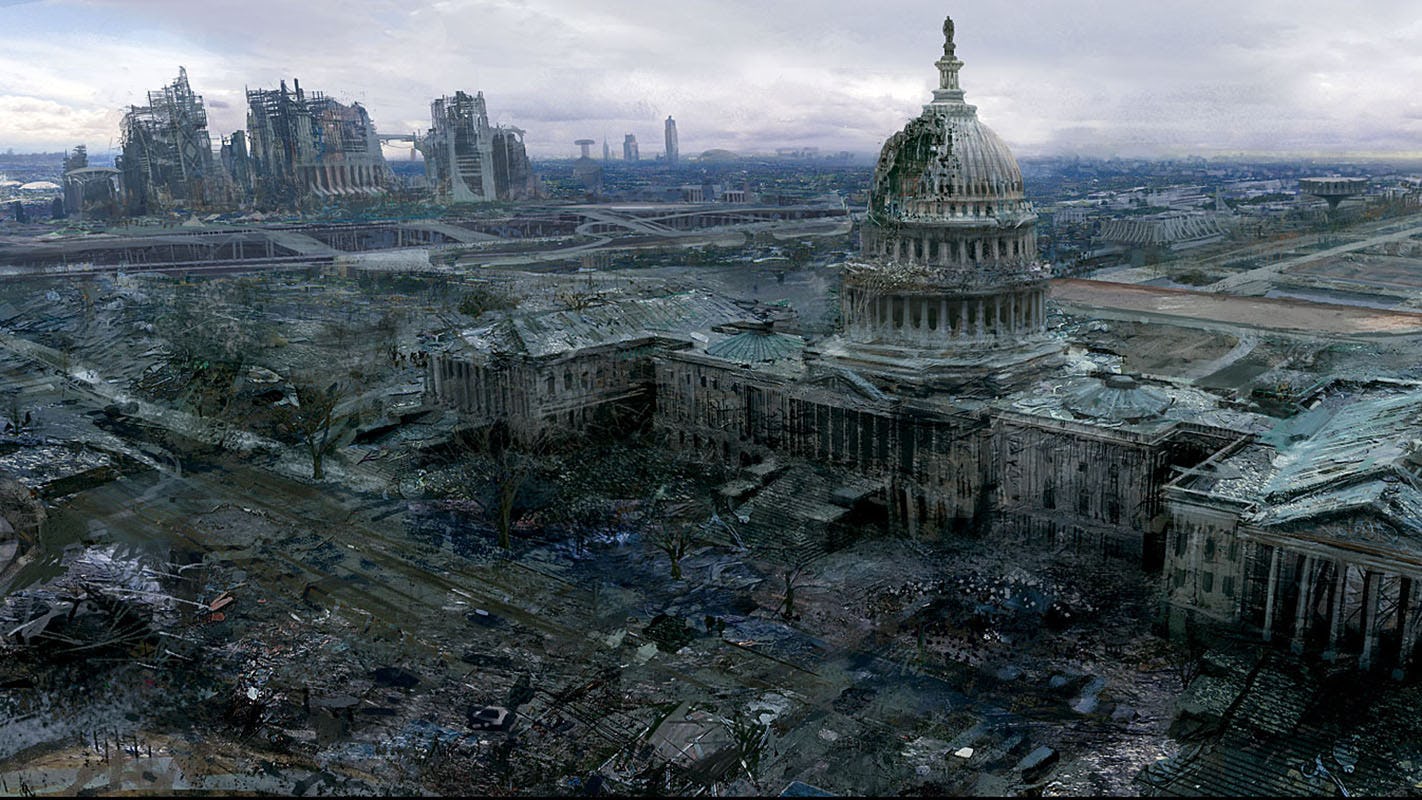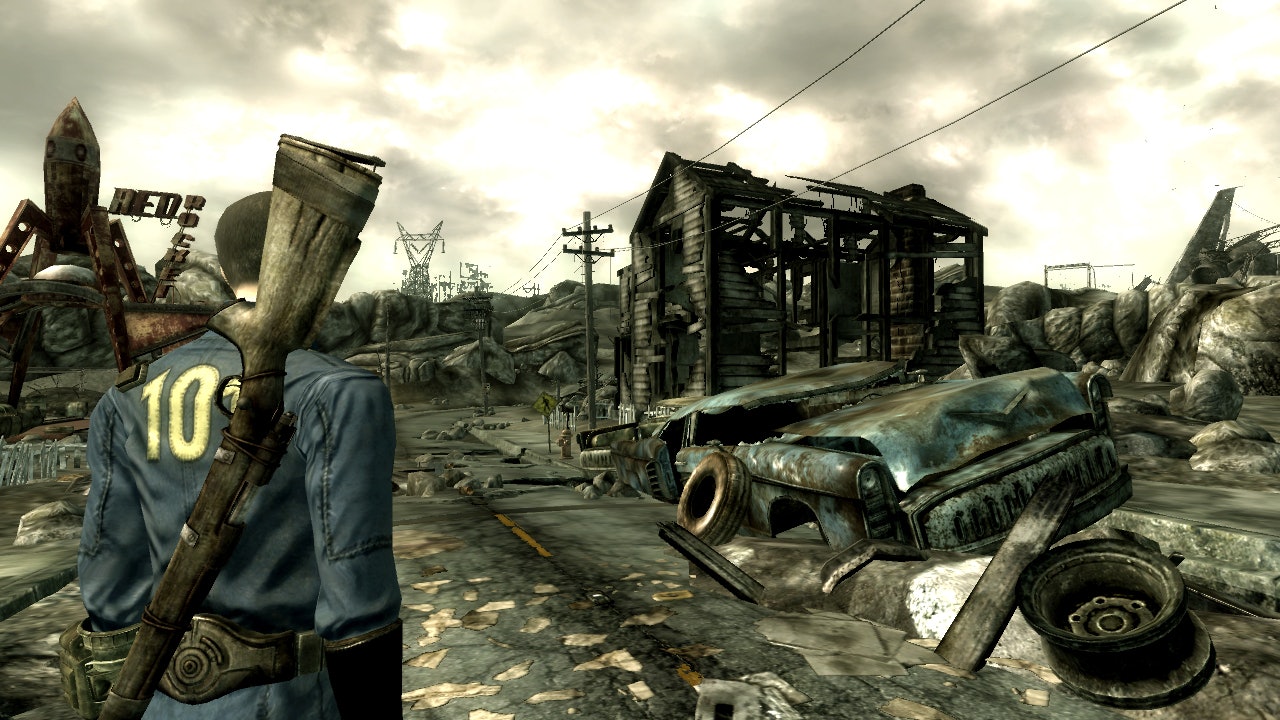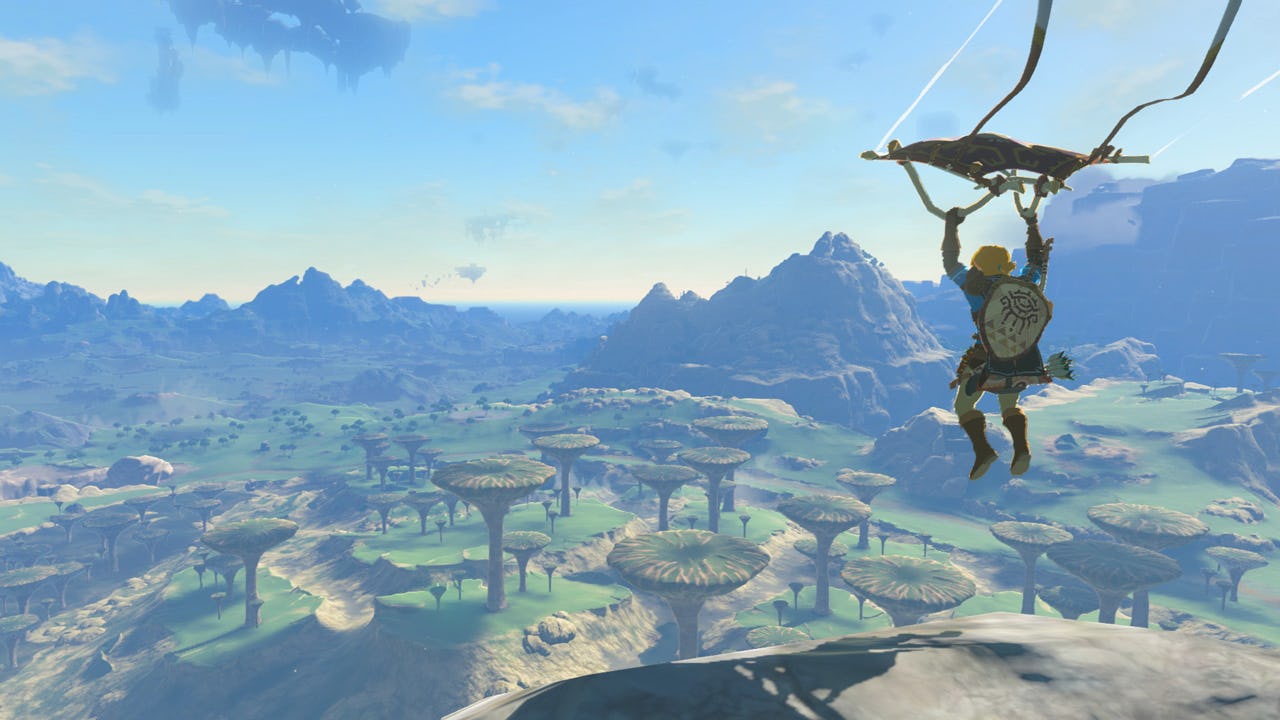
During your first few visits, Megaton is a maze. The dormant nuclear bomb serves as an imposing landmark, marking the center of the town. While all makeshift paths and bridges converge into it, it's easy to get lost. Moriarty's Saloon is right up north, but I kept sprinting to the west until I learned which corners to turn. It took me a while to find the shortcut that leads straight to the clinic from the upper side, too. This confusion is, in part, ironic — Megaton is dwarfed when compared to the likes of Rivet City, a settlement built inside an aircraft carrier, found on the southeastern corner of the Wasteland.
Spend some time getting to know its inhabitants, however, and you'll quickly realize Megaton's actual size bears no relevance. It's the townsfolk and their stories — from the Children of the Atom religion to Moira Brown's excitement over creating a survival guide for the world outside these walls — that make it a world of its own.
15 years after the release of Fallout 3, I still know my way around Megaton. Despite being one of the first you encounter across the Wasteland, it's a strong example of a design philosophy that few open-world games have since managed to replicate, one in which density trumps scale, creating a sense of place that strives to be remembered.

Megaton set the pillars to build future foundations. It reinforced, all the way back in 2008, the value of spaces that become familiar over time. But Bethesda has gradually moved away from this ethos. I can't recall a single settlement from Fallout 4, while Fallout 76 was more of a barren canvas for players to fill with their own myths and tales, slowly fostering communal-backed storytelling until the Wastelanders update added NPCs and story choices, albeit a little too late. The community knew which elements were sorely missing, and took it upon themselves to add them in, mixing absurdity with genius — from a murder maze to a theater troupe performing a grim depiction of Alice in Wonderland.
Jump to 2023 and Starfield, and it seems Bethesda has abandoned its roots altogether. Its selling point is the opposite of grounded — you're taken into outer space with the allure of 1,692 explorable planets. Even when roughly 10 percent have life in them. In an interview with Kinda Funny, game director Todd Howard said the goal was to capture "the magnificent desolation" of the universe. Empty worlds, whose surfaces are only meant to provide resources to the player, are supposed to leave a lasting impression on the player. But you don't need to travel across the galaxy to find examples of developers that iterated around this idea years ago, such as No Man's Sky, and slowly realized that evoking emotion in gargantuan open-world games is a fine line to traverse.

The aim, then, seems for AAA studios to compete with one another, pursuing the fallacy of making the one "true" endless game that reigns over the rest. One big enough to justify subscriptions and exclusivity deals after billionaire acquisitions.
The NPCs who inhabit a sliver of a thousand planets don't care about what you've done or what you'll do next. There isn't a system in place for them to remember your deeds, either, unless they're expected actions from already-written paths set in the script. As binary as it was, Fallout 3’s karma system helped create the illusion that the world would actually start to fear or cheer for the protagonist, demonstrated by bounty hunters jumping on you or Three Dog singing your praises on the local radio station.
It's not that Starfield is a lesser game without this. The problem is that Starfield represents what the ultimate expression of the trends of the past few years can culminate into, delivering an RPG that stumbles without its predecessors' pillars acting as a foundation.

These ambitions aren't uniquely Bethesda's. The Assassin's Creed series placed its bets on scale with the release of Assassin's Creed Origins back in 2017 and followed up with Odyssey and Valhalla, which can take hundreds of hours to complete in full. It's no surprise that the selling point for Assassin's Creed Mirage is a return to roots — even if such promise is easier said than done when the franchise has spent so much time feeding the opposite trend.
Still, there are traces of Fallout 3's ethos in other prominent examples of the genre. Baldur's Gate 3, an old-school RPG through and through, immediately makes you care about the small worlds you come across. It has a formidable sense of scale, but it's met with density, not unnecessary filler. I've already started growing familiar with Emerald Grove, a locale you can visit during the first few hours and can keep you occupied for the next dozen with intriguing stories. Like Megaton, it's one of many, but it sets a precedent that has become rare to see.
Games that have managed to achieve a familiar place that's worth exploring, such as the Yakuza series or The Legend of Zelda: Breath of the Wild, are even able to reuse the same foundation — literally speaking — to build new stories. It's why Kamurocho is still an exciting city to explore all these years later, or why revisiting Hyrule in The Legend of Zelda: Tears of the Kingdom feels new even when you're able to recognize most of its landmarks.

It's also worth considering the scaled-back open worlds that are, slowly but steadily, becoming an appealing subgenre. Spider-Man: Miles Morales and Uncharted: The Lost Legacy are prime showings of this, focusing on shorter but stronger worlds, pulled by narrative beats that aren't muddled by mundane activities meant to overstay your welcome. Even if they still can't get away with shaking off old tropes entirely, they provide a breath of fresh air on previously hundred-hour-long commitments. It's why recent examples like Cyberpunk: Phantom Liberty feel like such a reckoning, with Dogtown smaller than Night City without being less memorable.
There's no denying there's an established audience seeking the next massive open world to get lost in, enjoying maps created for completionism's sake, filled with an array of optional activities to tackle and to-do list tasks to cross off. But even if it took over a decade for the industry to trace back the legacy of games like Fallout 3, there's an emerging demand for more self-contained experiences. Ones in which it doesn't take more than a few hours to sympathize with a newfound familiarity.
To set a world on fire, you first need to know what you're burning. It's in that moment, when you realize you've begun to memorize your surroundings and grow fond of the people inhabiting those walls, that you inevitably hesitate. The space becomes more than an empty canvas to destroy or draw resources from, tackling task upon task while towns and communities serve as mere window dressing. Fallout 3's biggest lesson, then, is showcasing the triumph of open worlds that beckon you not to light a match in the first place.







